If you’ve ever experienced a bedbug bites or bug infestation, you know just how frustrating and unsettling it can be. These tiny insects can quickly multiply and cause havoc in your home, leaving you with itchy bites and sleepless nights. But fear not, there are effective ways to eliminate bed bugs and regain your peace of mind. In this article, we will explore bed bug dangers and the different strategies you can implement to get rid of these pesky pests for good.
Understanding Bed Bugs
Before we delve into the various methods of eradication, it’s important to have a basic understanding of these critters. They are small, oval-shaped insects that primarily feed on human blood. Expert hiders, they often living in cracks and crevices near sleeping areas.
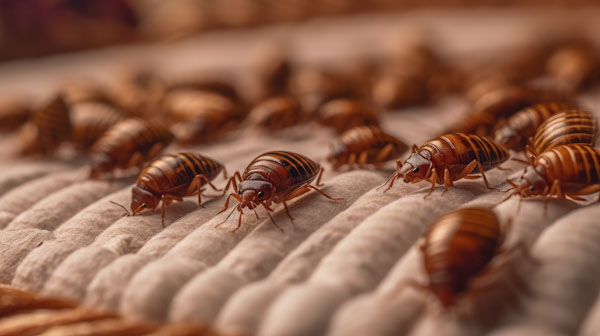
They belong to the Cimicidae family and are scientifically known as Cimex lectularius. These blood-sucking insects have been around for thousands of years, infesting homes, hotels, and even public transportation.
Their resurgence in recent years has caused a significant rise in bed bug infestations worldwide, leading to increased awareness and a health concern.
The Life Cycle of Bed Bugs
Bed bugs go through several stages of development: egg, nymph, and adult. During their lifetime, female bed bugs can lay hundreds of eggs, with up to five eggs laid every day.
These eggs are tiny, about the size of a pinhead, and are usually laid in clusters or individually in hidden locations. The female bed bug uses a special adhesive to attach the eggs to surfaces, ensuring their stability and protection.
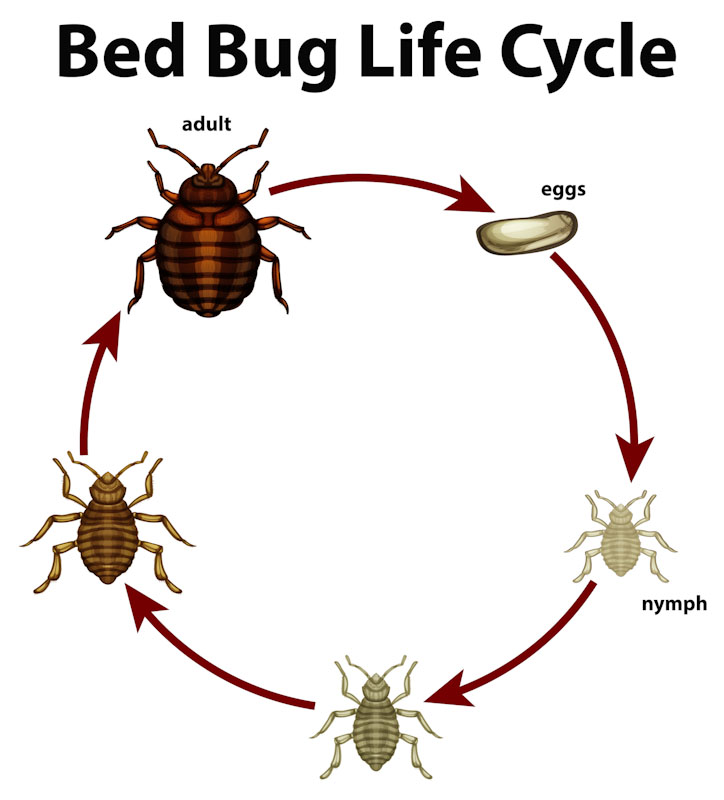
Within a week, the eggs hatch into nymphs, which are miniature versions of adult bed bugs. These nymphs are translucent and almost colourless, making them difficult to spot with the naked eye. Unlike adults, nymphs require a blood meal to moult and progress to the next stage of their development.
They are highly active and can move quickly, making it challenging to catch them in the act.
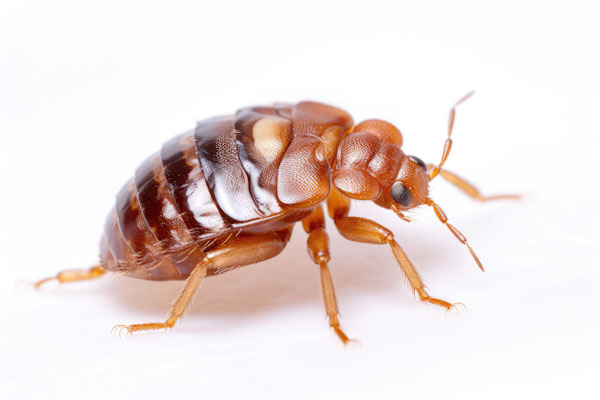
After several moults, usually over a period of about five weeks, the nymphs reach adulthood. Adult bed bugs are approximately the size of an apple seed, with a reddish-brown colour. They have a flat, oval-shaped body, which allows them to hide in narrow spaces.
Bed bugs are wingless insects, relying on their ability to crawl and hitchhike to travel from one location to another.
Common Habitats of Bed Bugs
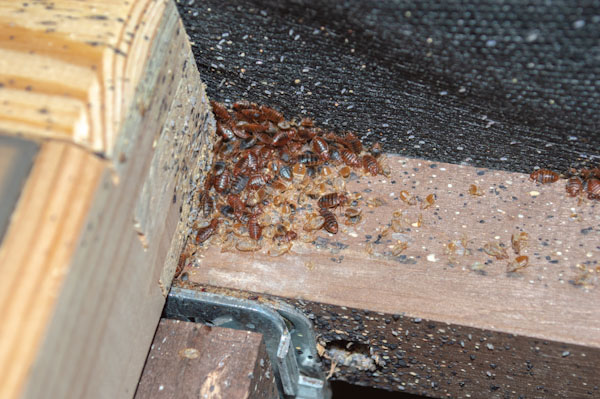
Bed bugs are not limited to beds alone; they can be found in various areas throughout your home. While they are commonly associated with mattresses, these resilient pests can infest a wide range of furniture and household items.
One of the reasons bed bugs are so difficult to eradicate is their ability to squeeze into tiny cracks and crevices. They can hide in the seams of mattresses, bed frames, box springs, behind loose wallpaper, inside electrical outlets, and even in the folds of curtains. These pests are masters of disguise, blending seamlessly into their surroundings and evading detection.
Though they have the ability to move much farther, bed bugs typically reside within two metres of where people sleep.
It’s important to note that bed bugs are not limited to homes. They can also be found in hotels, dorm rooms, hospitals, cruise ships, and other public spaces.
Their ability to hitch a ride on luggage, clothing, and many other types of personal belongings makes them excellent travellers, spreading from one location to another with ease.
Now that we have a better understanding of bed bugs and their life cycle, we can explore effective methods of eradication.
Identifying a Bed Bug Infestation
Knowing the signs of a bed bug infestation is crucial in order to take prompt action. These pests leave behind several tell-tale signs that can help you confirm their presence in your home.
Itchy Bites
One of the most obvious signs of bed bugs is waking up with itchy red bites on your body. Bed bug bites can be quite bothersome and can cause discomfort throughout the day.
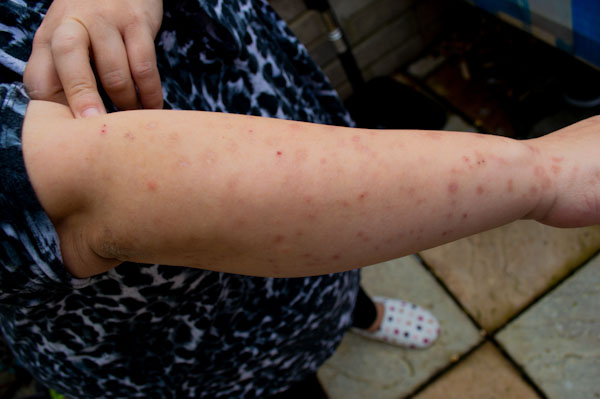
Bed bugs can bite in a linear or random pattern. The bites may appear as small, red welts that can be itchy and inflamed. The symptoms may take a few days to appear after the initial bite, and tend to last several weeks.
Bug Excrement
In addition to the bites, you might notice other signs of bed bugs in your home. Dark stains or spots on your mattress or bedding are actually bed bug excrement. These stains are a result of the bugs feeding on your blood and then defecating on the surfaces they inhabit. The excrement can appear as small, black dots or smears on your sheets, pillowcases, or mattress.
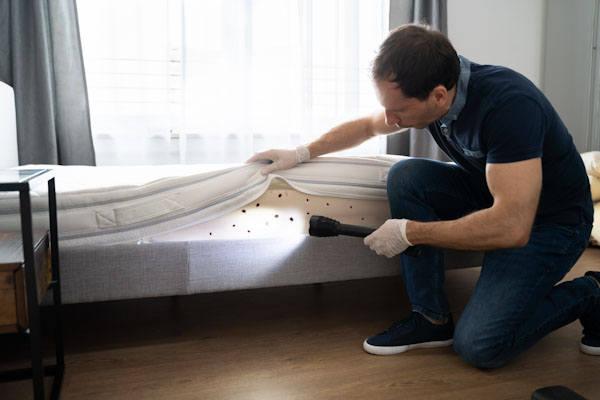
Shed Skins
Another indication of a bed bus is the presence of their discarded exoskeletons. As bed bugs grow and mature, they shed their outer shells, leaving behind empty exoskeletons. These exoskeletons are translucent and can often be found in the areas where bed bugs hide, such as mattress seams, cracks in furniture, or behind wallpaper.
Musty Odour
You may notice a sweet, musty odour in your bedroom or other areas of your home. This odour is caused by the pheromones released by bed bugs and can be quite distinct.
If you detect an unusual smell that you can’t explain, it’s worth investigating further for a possible bed bugs.
They Do Not Have To Eat Everyday
Bed bugs often skip meals and may go for very long periods several days without consuming anything. It may therefore take several weeks to become aware that you have been bitten by bed bugs or that your home is infested with them.
Are bed bugs bite dangerous? Is there a Health risk?
While bed bugs are not currently known to spread disease, their bites can cause itching, irritation, and allergic reactions in some individuals. The saliva of bed bugs contains proteins that can trigger an allergic response in sensitive individuals. Enlarged bite marks, uncomfortable swellings at the bite site, and, in rare cases, anaphylaxis are some of the symptoms associated with allergies to bites.
Repeated exposure to bed bug bites can also result in psychological effects such as anxiety, insomnia, and stress. The constant fear of itching or being bitten again can disrupt sleep patterns and cause significant distress.
In severe cases, individuals may develop a condition known as “bed bug psychosis,” where they become obsessed with eliminating the bugs and experience hallucinations or delusions related to the infestation.
Prevention Strategies for Bed Bugs
By implementing a few simple strategies, you can significantly reduce the chances of these invaders in your home.
Regular Cleaning and Maintenance
Keeping your home clean and clutter-free is an effective way to prevent bed bugs from settling in.

Vacuuming regularly, especially in areas where you sleep, can help to remove any potential hiding spots for these pests. Additionally, washing your bedding in hot water and drying on high heat can kill any bed bugs or eggs that may be present.
Second Hand Upholstered Furniture Etc.
Before bringing second-hand mattresses, bedding, and upholstered furniture into your house, inspect them.
Travel Precautions to Avoid Bed Bugs
Bed bugs are known to hitchhike on luggage and clothing, making hotels and other public places prime areas for infestations.
Inspect hotel rooms for signs of bed bugs before unpacking and consider using protective covers for your luggage.
Killing Bugs With Diatomaceous Earth
Diatomaceous earth is a fine powder made from fossilized remains of diatoms, a type of algae. It can be effective in killing bed bugs by dehydrating their exoskeleton. Sprinkle diatomaceous earth in areas where bed bugs are suspected, such as cracks and crevices, and leave it for several days before vacuuming it up. For the bed bug it is the equivalent of crawling over broken glass.
Professional Pest Control for Bed Bugs
While DIY methods can be helpful in eliminating bed bugs, severe infestations may require professional intervention. Knowing when to call in the experts and what to expect from professional treatment is essential.
When to Call a Professional
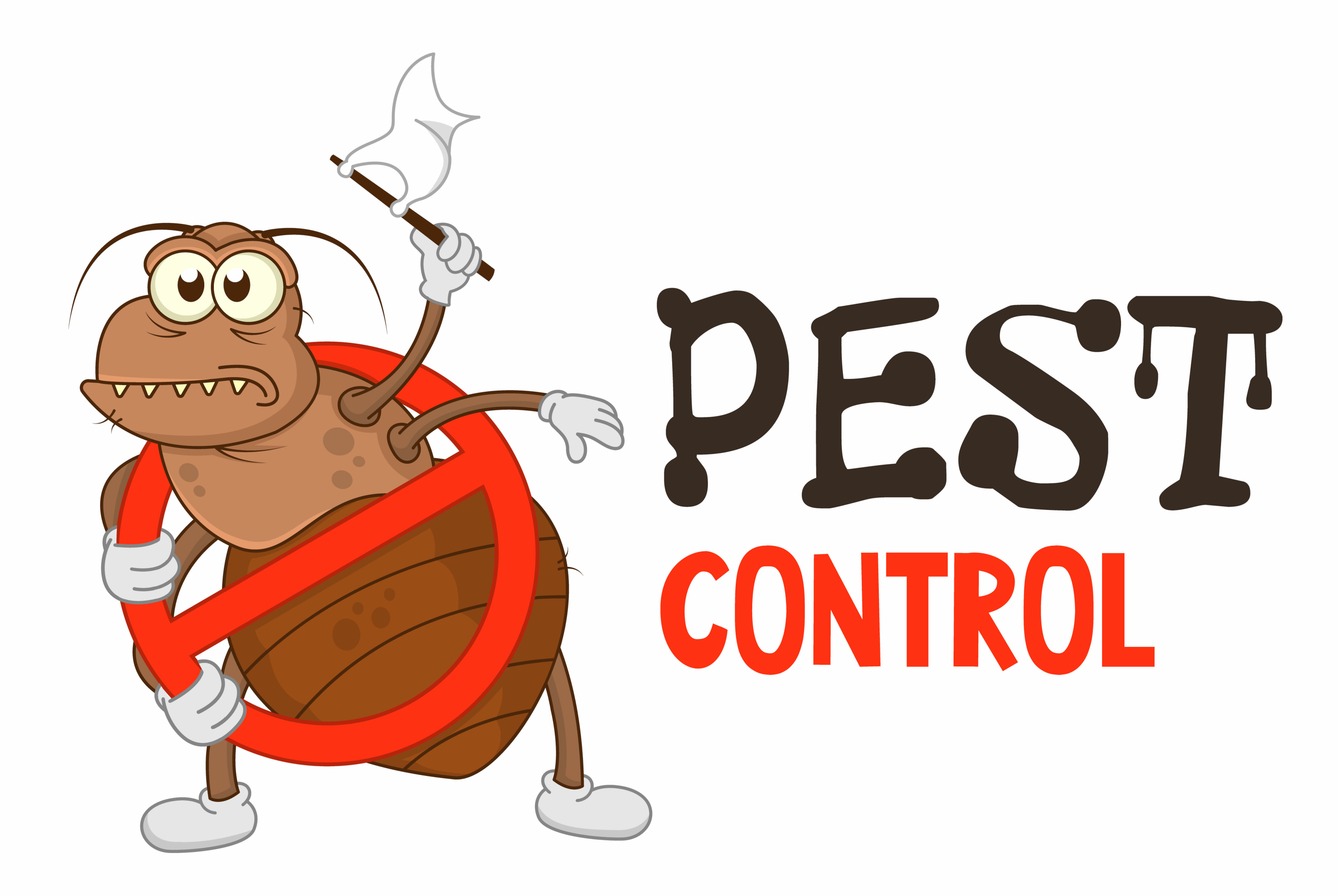
If your attempts at eradicating bed bugs have been unsuccessful or if the infestation is widespread, it’s time to seek professional help. Pest control companies have the knowledge and experience to effectively eliminate bed bugs using a combination of methods.
What to Expect from Professional Bed Bug Treatment
Professional bed bug treatment typically involves a thorough inspection of your home, followed by targeted treatments to eliminate the infestation. The methods used may include the application of insecticides, steam treatment, and heat treatment, depending on the severity of the infestation.
To Sum Up – Bed Bug Infestations
By understanding bed bugs, identifying an infestation, implementing preventive measures, and exploring natural remedies or calling in a professional pest control company, you can successfully get rid of these unwanted intruders.
Remember, perseverance and consistency are key in the battle against bed bugs. With the right approach, you can regain control of your home and eliminate these pests once and for all.
Additional Reading
How To Get Rid Of Fleas In House
More Helpful Content
Visit our Homepage
